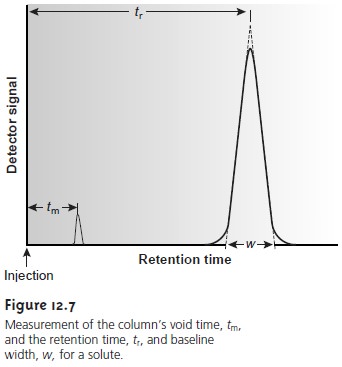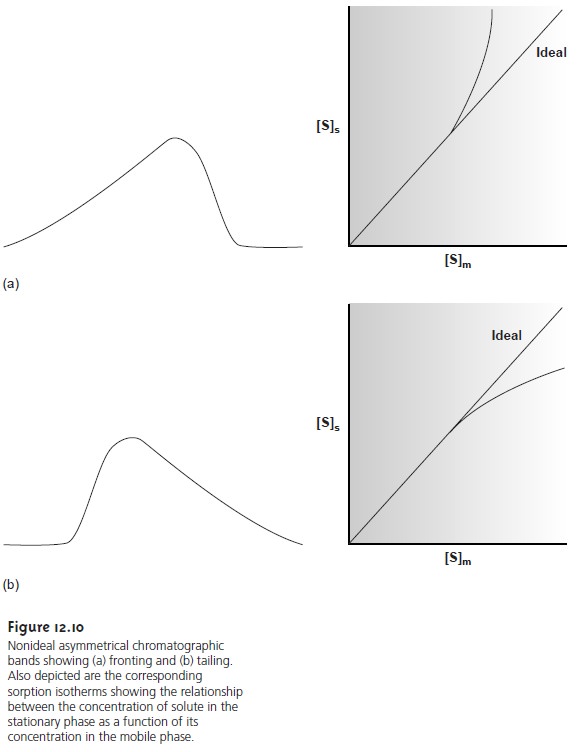Chapter: Modern Analytical Chemistry: Chromatographic and Electrophoretic Methods
Nonideal Behavior - Theory of Column Chromatography
Nonideal Behavior
The treatment of chromatography assumes
that a solute elutes as a symmetrical band, such as that shown
in Figure 12.7.
This ideal behavior occurs when the solute’s
partition coefficient, KD, is constant for all concentrations of solute. In some situations, chromatographic peaks show nonideal
behavior, lead- ing to asymmetrical peaks, similar to those shown in Figure 12.10. The chromato-
graphic peak in Figure 12.10a
is an example of “fronting” and is most often the re-
sult of overloading the column with sample.
Figure 12.10b, which is an example of “tailing,” occurs
when some sites
on the stationary phase retain
the solutes more strongly than other sites.


Related Topics